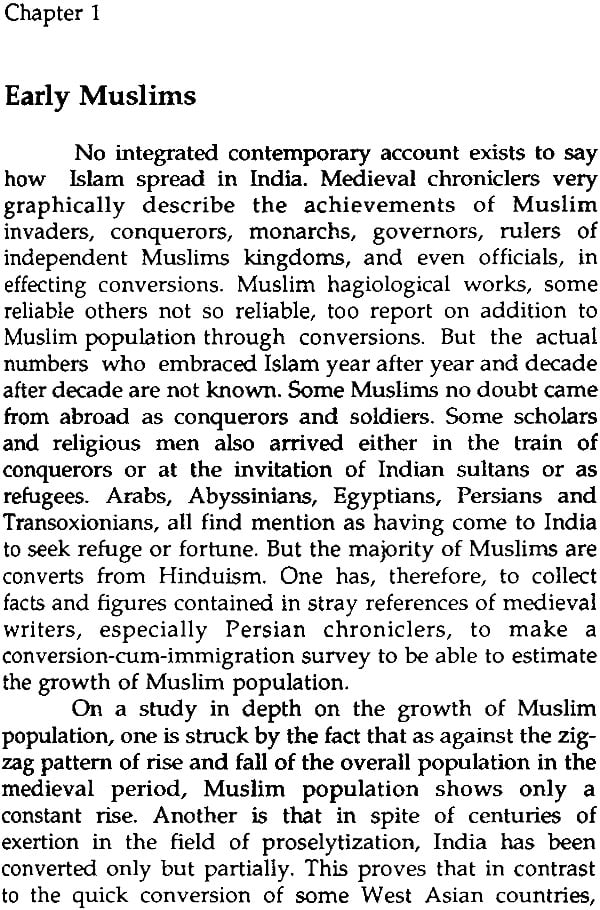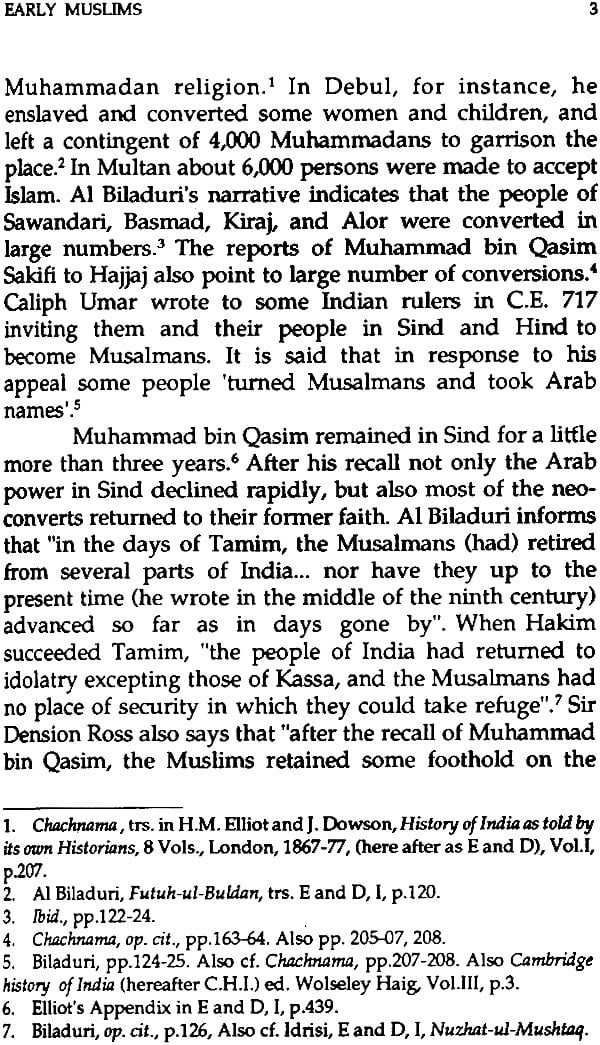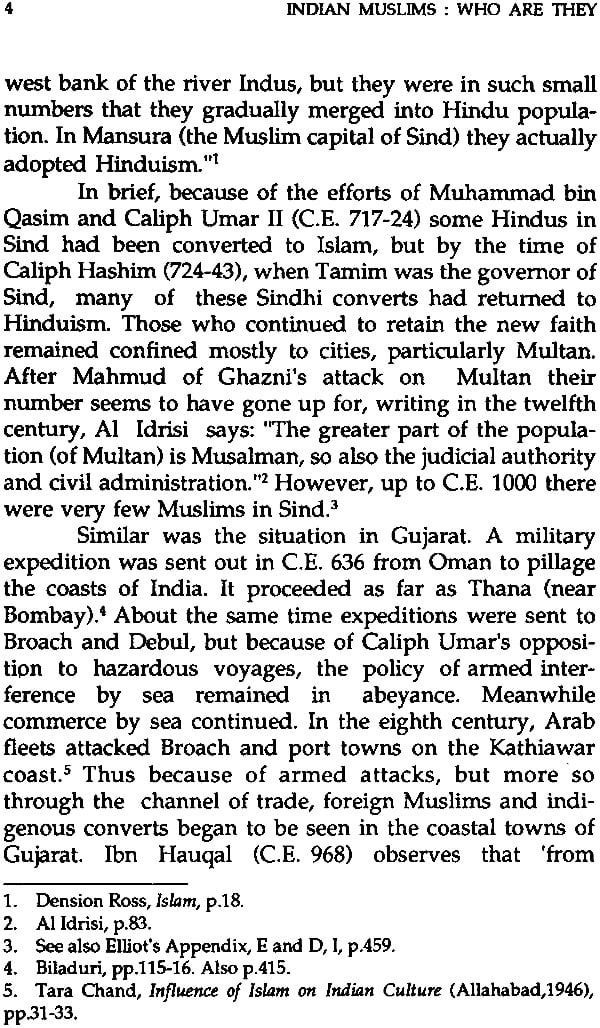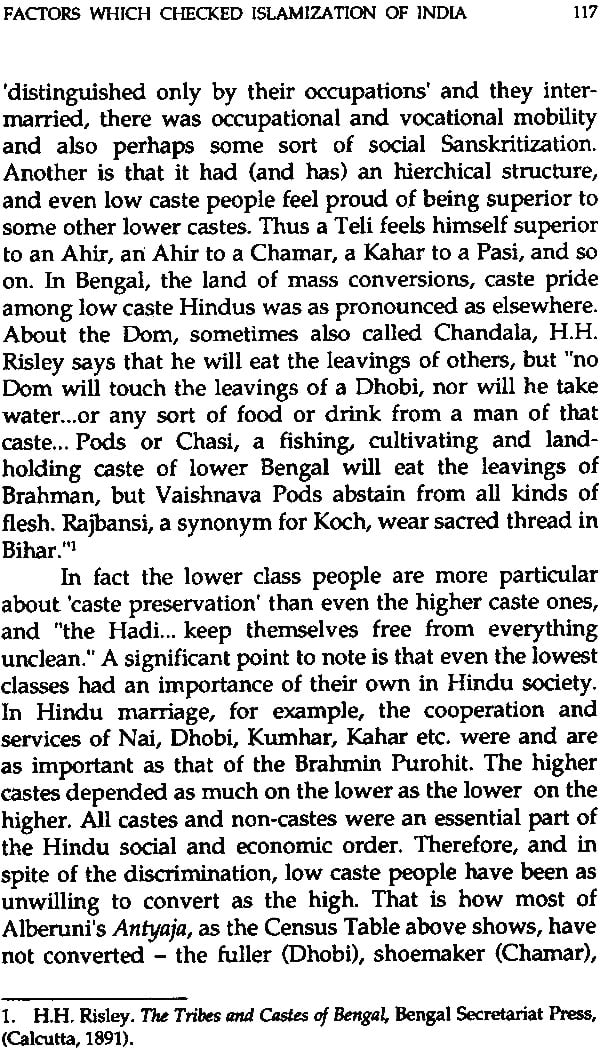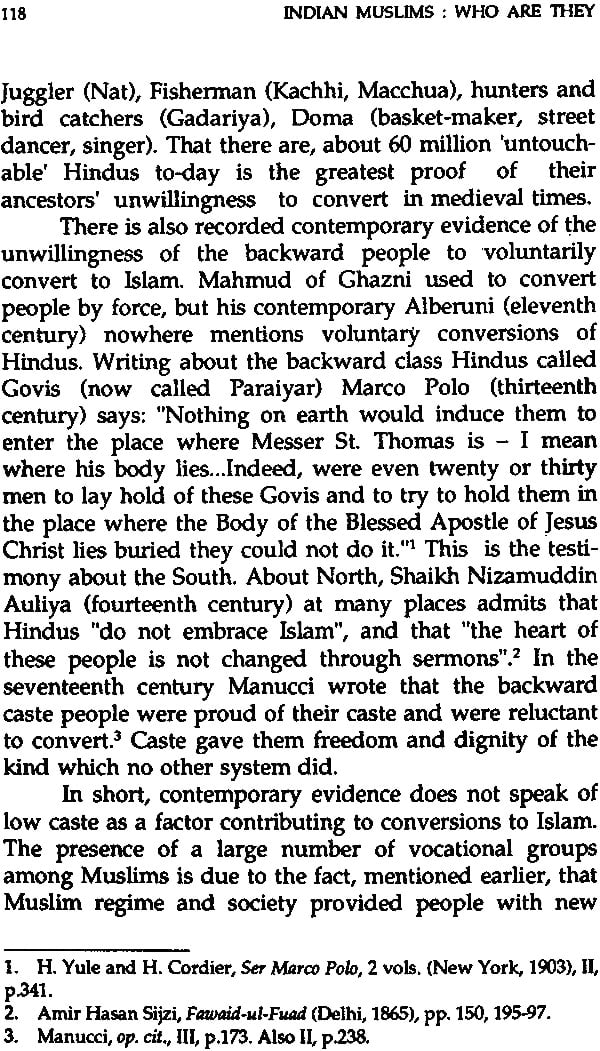
Indian Muslims (Who are They)
Book Specification
| Item Code: | NAM187 |
| Author: | K. S. Lal |
| Publisher: | Voice of India New Delhi |
| Language: | English |
| Edition: | 2018 |
| ISBN: | 8185990107 |
| Pages: | 168 |
| Cover: | Paperback |
| Other Details | 8.5 inch x 5.5 inch |
| Weight | 260 gm |
Book Description
Several factors have contributed to the growth of Muslim population in India-invading armies with their retinues, constant recruitment of soldiers from across the borders, red-carpet welcome extended to immigrants from Muslim countries, forcible conversions, proselytization by means of pressures and temptations, large-scale polygamy with Hindu women, and the proverbial Muslim fecundity enjoined by express statements of the Prophet who wanted his flock “to more numerous than any other people”.
Dr. K.S. Lal has documented in some fullness how the continued wars f conquest waged by the Islamic invaders ensured a constant supply of Hindu prisoners of war who were sold and resold as slaves and who eventually ended up by feeding the Muslim population. It may sound cruel but the Theology of Islam does prescribe capture and enslavement of non-combatant men, women and children of the infidels as a part of the legitimate booty promised by Allah to those who fight for enforcing his commandments. The history of Islam is replete with this practice.
On the other hand, Dr. Lal examines in some detail and refutes conclusively the oft-repeated theory that the Hindu caste system was responsible for conversions to Islam. He points out that the countries in the Middle East, Central Asia and North Africa had no caste system and yet they succumbed completely to the onslaught of Isla. Hindus by and large resisted conversion even when the choice was between Islam and death: the pride they took in their caste, as in their religion and culture, was one of the powerful the Islamization of India.
Micro-studies of Muslim communities in larger India including Afganistan will reveal that very few of their ancestors converted by choice to the invader’s faith, and that an overwhelming majority of them are Hindus in their origin, stock and religion. Such studies will also reveal to the Hindus that the so-called Muslims are mostly their own brothers, the “lost” tribes of Hinduism, who were separated from their fraternity under very special circumstances.
About the Author
Professor Kishori saran Lal (1920-2002) took his doctorate degree in Medieval Indian History from the University of Allahabad in 1945.
He has published a number of articles and monographs on Medieval Indian History About his History of the Kbaljis (revised, 1967,) the Times Literary Supplement, London, wrote: “This book is unlikely to be superseded.” The statement holds good for his other works also. All his books have met a world-wide acclaim.
There are books on Indian Muslim like M. Mujeeb’s The Indian Muslims (George Allen & Unwin, London, 1967) and Ram Gopal’s Indian Muslims (Asia Publishing House, Bombay, 1959). There are Journals, Articles, and “Letters to the Editor” on Indian Muslims or Muslim Indians. But who are these Indian Muslim?
M. Mujeeb answers: “whoever they may be, and Wherever they may be in India, the Indian Muslims take themselves for granted” (p.9). It is indeed not necessary to attempt a meticulous definition of Indian Muslims because they are keen on asserting their identity that one cannot mistake them wherever they may be. Mujeeb further adds: “It is the author’s firm belief that the Indian Muslims have, in their religion of Islam, and in the true representatives of the moral and spiritual values of Islam the most reliable standards of judgement, and they need not look elsewhere to discover how high or low they stand” (p.24).
Inspite of this declaration, the moral and spiritual value of Islam and the actions of their true representatives, have been studied by many scholars in India and abroad, more abroad than in India. We shall therefore not concern ourselves with these values here. We shall confine our study to Processes of processes of how Indian Muslims came into being and how they have grown in numbers to form the largest minority in India. Ours is a study only in the demography of Indian Muslims.
| Indian Muslims: Prologue | vii | |
| Chapter 1 | Early Muslims | 1-16 |
| Chapter 2 | Rise of Muslims under the Sultanate | 17-42 |
| Muslim Immigration | 17 | |
| Conversions | 21 | |
| Proselytization Activity of the Government | 26 | |
| Voluntary Conversions | 28 | |
| Muslim Losses | 29 | |
| Natural Growth of Muslim Population | 34 | |
| Indian Muslims around C.E. 1400, | 37 | |
| Chapter 3 | Proselytization in Provincial Muslim Kingdoms | 43-70 |
| The Sultanate -The Punjab, Sind and U.P. | 45 | |
| Kashmir | 48 | |
| Gujarat | 49 | |
| Malwa | 51 | |
| The Deccan | 53 | |
| The Malabar Coast | 55 | |
| Bengal | 56 | |
| Chapter 4 | Growth under the Mughals | 71-89 |
| Chapter 5 | Factors Contributing to the Growth of Muslim Population | 90- 108 |
| Coversions | 90 | |
| Immigration | 102 | |
| Polygamy | 103 | |
| Higher Facundity | 105 | |
| Lesser Losses | 106 | |
| Chapter 6 | Factors which Checked Islamization of India | 109-129 |
| Vastness of the country | 109 | |
| Hindu 'Protestant' Movements | 110 | |
| Caste System | 114 | |
| Akbar's Regulations | 122 | |
| Christian Missionaries | 124 | |
| Muslim Cult of Violence | 126 | |
| Epilogue | 130-139 | |
| Bibliography | 140-147 | |
| Index of Names and Subjects | 148-161 | |
